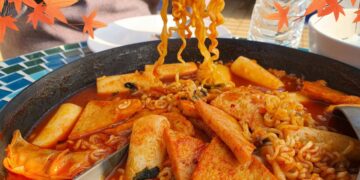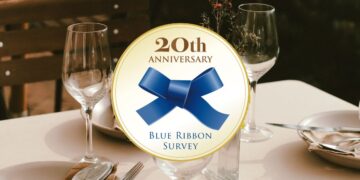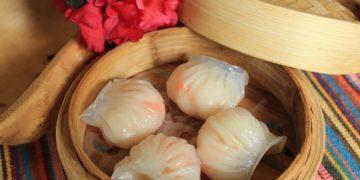Embark on a culinary adventure through time, exploring the ten oldest restaurants in Seoul. Discover the rich history and unique flavors of traditional Korean dishes and cuisine.
Food powerfully represents a culture’s history, traditions, and lifestyle. It is a universal language, conveying nuances of the regional flavor, local ingredients, and time-honored practices. This idea couldn’t be more accurate when considering the rich culinary tapestry of Korea. Offering a unique gastronomic adventure, Korean cuisine encompasses an array of dishes, each bearing a distinctive character, revealing a captivating tale about its origin and evolution. Let us embark on a journey into the culinary heart of Korean culture, exploring the 10 oldest restaurants in Seoul, the country’s dynamic capital.
Seoul, a vibrant metropolis with over 2000 years of history, teems with culinary establishments that chronicle the city’s dynamic journey through time. The oldest of these eating houses sprang up in the early 1900s, with many others following in the 1920s and ’30s. While it might seem surprising that the longest-standing restaurants aren’t older, considering Seoul’s historical depth, their survival is a testament to their remarkable resilience.
Each restaurant on our list has weathered a tumultuous 20th century in Korea, marked by profound transformations and challenges. From the scars of wars and occupations to the swift economic growth, these oldest Korean restaurants in Seoul have stood firm; their survival is a testament to their tenacity, quality, and indomitable spirit. Each bears a unique tale of dedication and perseverance, etched into their walls and reflected in their dishes and traditional Korean cuisine.
The narratives of these longstanding oldest traditional Korean restaurants in Seoul offer a glimpse into the evolution of Korean cuisine and reflect the wider historical and social shifts in Korean society. Their endurance and adaptability amid changing times contribute to their allure as much as the tantalizing flavors of these traditional Korean dishes. Thus, visiting these places provides a unique gastronomic and historical experience, allowing you to taste authentic traditional Korean food while immersing yourself in the rich tapestry of Korean history and culture.
So, let’s map out Korea’s favorite traditional dishes and navigate the lanes of Seoul’s oldest eateries. From the hearty soups of Eunho Sikdang to the royal delicacies of Han Il Kwan, each restaurant and every dish tells a story. They form an integral part of Seoul’s culinary landscape, as edible monuments to the city’s rich, multifaceted history, shaping and shaped by the culture they represent.
Imun Seolnongtang (이문설농탕) | 1902-1907
Stepping into Imun Seolnongtang is akin to traversing a time portal, transporting visitors into the early 1900s when the restaurant was established. With origins veiled amid time, this century-old establishment is the oldest restaurant in Korea, famed for its seolleongtang, a deeply satisfying beef broth from traditional Korean cuisine simmered to perfection over 15 hours. The restaurant’s name is reminiscent of a bygone era; “imun” traces its roots back to Imun-gol, the restaurant’s original location, while “seolnongtang” is an archaic term for its signature dish.
Imun Seolnongtang also had a brush with the Olympics when marathon gold medalist Gijeong Son from the 1936 Berlin Olympics turned into a regular. Today, patrons can adjust the seasoning of their seolleongtang to their liking with a variety of condiments, enabling them to curate their dining experience.
HyeongJae Chueotang (형제추어탕) | 1926 – CLOSED
Nestled near the base of Bukhan Mountain is Hyeongje Chueotang, the second oldest restaurant in Seoul. Known for its traditional mudfish soup, or chueotang, it has sustained an enduring legacy that spanned nearly 90 years before its closure. Chueotang, a wholesome soup prepared with mudfish, is revered for its distinctive flavor profile and nutritious qualities. This dish is deeply entrenched in Korean culture and is enjoyed across generations.
Its chueotang recipe features an aromatic blend of ground freshwater mudfish, a myriad of vegetables, soybean paste, red pepper paste, and ash seed powder.
Hyeongje Chueotang’s chueotang has beautifying properties, packed with Vitamins, protein, and calcium. The establishment was equally lauded for its stir-fried mudfish and fried mudfish, garnering it a reputation as one of the best chueotang destinations in Seoul.
Yong Geum Oak (용금옥) | 1932
Regarded as one of the best oldest Korean restaurants in Seoul for chueotang, Yong Geum Oak is the third oldest restaurant in Seoul. Opened in 1932, the restaurant’s recipe has been carefully honed over nearly a century by three generations of chueotang masters. Its mudfish soup is served with noodles, a unique approach among traditional chueotang restaurants.
Although it may be younger than its venerable counterpart, Hyeongje Chueotang, Yong Geum Oak has already made a formidable name for itself in Seoul’s vibrant food landscape.
The prime location of Yong Geum Oak near the Cheonggyecheon stream makes it a must-visit for tourists, offering a perfect blend of Seoul’s vibrant past and bustling present.
Eunho Sikdang (은호식당) | 1932
Embodying the heart and soul of Korean cuisine, Eunho Sikdang, which first opened its doors in 1932, is the fourth oldest restaurant in Korea. Nestled in the vicinity of the vibrant Namdaemun market in Seoul, Eunho Sikdang is an iconic culinary destination known for its uncompromising commitment to tradition.
Eunho Sikdang’s culinary journey began as a humble street stall vendor, offering a deceptively simple yet tantalizingly delicious dish – ggori gomtang (oxtail soup). Over the years, the restaurant has been passed down through three generations, all of whom remained dedicated to maintaining the quality and integrity of this cherished recipe.
This oxtail soup, a classic Korean comfort food, is a rich, hearty broth produced from hours of slow-simmering oxtails. The soup is served with noodles, often complemented by a generous portion of rice and the quintessential Korean accompaniment, kimchi. It is an excellent introduction to Korean cuisine for those yet to step away from the more globally recognized Korean barbecue or bibimbap. But Eunho Sikdang is not a one-trick pony. In addition to its famed oxtail soup, the restaurant boasts a menu brimming with a variety of traditional Korean dishes in the form of stews. Their impressive menu includes dishes like ox knee and beef stew, beef bone soup, and steamed pork, each providing a unique taste of traditional Korean fare.
Despite its age, Eunho Sikdang has not faded into obscurity. Instead, it’s gained recognition on major Korean TV networks like SBS and MBC, further cementing its status in the culinary scene. Behind its unassuming facade lies a treasure trove of gastronomical delights, a testament to the enduring allure of traditional Korean cooking. Eunho Sikdang’s story is of culinary heritage, and flavors passed down through generations, and the enduring appeal of honest, hearty cuisine.
Gombo Chutang (곰보추탕) | 1933 – CLOSED
Gombo Chutang, the fifth oldest restaurants in Seoul, captivated patrons with its chutang, a variation of the traditional mudfish soup. The restaurant’s success hinged on its limited but expertly executed menu: chutang, ddaro chutang, and fried mudfish. The key difference between the two types of soups was whether rice was served within the soup or separately.
Jaem Bae Oak (잼배옥) | 1933
Jaem Bae Oak has seen the rise and fall of generations, the horrors of war, and the changing face of Seoul since its establishment in 1933. The restaurant serves a traditional seolleongtang, a rich beef bone soup that has kept its flavor unchanged through the decades.
Starting as a small establishment in a back alley near Seoul Station, it has weathered the trials of time and has expanded its menu to include traditional Korean dishes like doganitang, ggori gomtang, suyuk, and haejangguk.
Cheong Jin Oak (청진옥) | 1937
Cheong Jin Oak, a family-run establishment since 1937, serves the city’s best Haejungguk (hangover soup), catering to Seoulites at all hours. The secret behind their revered hangover soup from traditional Korean cuisine is the harmonious blend of sunji (congealed cow’s blood), tripe, and miscellaneous intestines, simmered in a hearty beef broth.
The 24/7 service makes it one of the beloved oldest Korean restaurants in Seoul for night owls, shift workers, and soju lovers seeking comfort and restoration from a hearty bowl of soup.
Ha Dong Kwan (하동관) | 1939
Ha Dong Kwan, established in 1939, is the epitome of tradition and quality. The restaurant is committed to a time-honored practice of preparing just one pot of gomtang (beef bone and tripe soup) per day, a ritual upheld by four generations of the family.
The gomtang at Ha Dong Kwan is a feast for the senses, packed with tender pieces of beef and clear, flavorful broth. The restaurant prides itself on its commitment to quality, using only domestic ingredients and serving a limited number of bowls each day to ensure that each patron enjoys the freshest meal possible.
While the gomtang and seolleongtang (ox bone soup) may appear similar, they’re akin to close cousins with unique characteristics. Seolleongtang primarily uses beef bone and brisket as the main ingredients, offering a dense, meaty flavor. In contrast, gomtang brings to the table an added complexity of taste with the inclusion of beef tripe and entrails, adding a distinctive, earthy undertone to the broth.
The soul of Ha Dong Kwan lies not in secret ingredients or an infallible recipe but in the long-standing tradition of dedication, hard work, and unwavering commitment to traditional Korean cuisine. The philosophy at Eunho Sikdang is steeped in the belief that the best gomtang (beef bone soup) is born out of a well-disciplined devotion. This devotion reflects in their food’s rich, comforting flavors and warm, inviting ambiance that keeps customers returning for more.
The illustrious list of their clientele, including celebrities and eminent personalities, is a testament to their success. One notable patron was the former Korean president Park Chung-hee, who, like many others, was lured by the tantalizing allure of the restaurant’s renowned gomtang.
Han Il Kwan (한일관) | 1939
Established in 1939, Han Il Kwan is an eminent symbol of Korea’s culinary heritage. Nestled in the heart of Seoul, this upscale restaurant elegantly balances tradition with modernity, reflecting Korea’s rich food culture while also adapting to evolving tastes.
The dining experience at Han Il Kwan transcends the usual; it’s an immersive journey through the corridors of Korean history. It is renowned for hosting famous personalities, including former presidents like Lee Seung-man, Park Jeong-hee, and Roh Moo-hyun. However, Han Il Kwan has always ensured that its magnificence is accessible to everyone, not just the elite.
The restaurant’s culinary repertoire showcases original Korean cuisine, with a particular emphasis on royal court dishes. Han Il Kwan is credited with bringing these once-exclusive dishes into the mainstream by devising quicker preparation methods. Today, they continue to enthrall patrons with this royal culinary tradition.
Han Il Kwan’s Bulgogi is a signature dish that embodies the restaurant’s commitment to quality, traditional Korean cuisine, and authenticity. The well-curated menu also includes traditional Korean dishes like Tangpyeongchae (mung bean jelly mixed with vegetables), Gujeolpan (platter of nine delicacies), and Nakji Bokkeum (stir-fried baby octopus). For the adventurous palate, Han Il Kwan offers a special lunch menu the chef chooses, providing an exquisite introduction to Korean gastronomy.
The restaurant’s sophisticated yet welcoming decor accentuates the dining experience, making it a culinary haven that seamlessly blends the old and the new.
Oak Cheon Oak (옥천옥) | 1945
Oak Cheon Oak, a Seoul institution since 1945, is among the city’s ten oldest restaurants. The restaurant is situated in the Dongdaemun area, an eastern district of Seoul known for its vibrant food scene.
Oak Cheon Oak specializes in seollongtang, a traditional Korean soup made from ox bones, brisket, and other cuts of beef. The restaurant’s rendition of this dish stands out due to its intense and velvety broth, which might be a new flavor experience for first-time visitors. Paired with fresh Kimchi, the Seollongtang becomes a symphony of balanced flavors, offering a hearty meal that leaves a lasting impression.
The restaurant also had the honor of serving Lee Myung Bak, the 17th President of Korea, further cementing its position as a significant player in Seoul’s culinary scene.
Although Oak Cheon Oak was relocated in 2008 due to redevelopment in its original location near Sangwangsimni Station, it continued to draw diners with its consistent quality, traditional Korean cuisine, and adherence to traditional cooking techniques. The restaurant has been featured in TV shows and local newspapers, testifying to its influence on the city’s food culture.
Apart from its famous seollongtang, Oak Cheon Oak also serves traditional Korean bulgogi, adding to its diverse traditional Korean dishes offerings. A standout dish is their cow head soup, a misnomer that actually refers to a deeply flavorful broth made after hours of careful simmering. This soup showcases the restaurant’s commitment to crafting dishes that resonate with authenticity and depth of flavor.
Wrapping Up
In conclusion, the oldest Korean restaurants in Seoul offer a rich culinary exploration that intertwines history, tradition, and culture. From the century-old Imun Seolnongtang to the gastronomic heritage of Han Il Kwan, these enduring establishments continue to serve generations of patrons, reflecting the evolving face of Korean cuisine while preserving age-old traditions. They serve not just food but stories – tales of resilience, innovation, and an unwavering dedication to the culinary craft. Embarking on a journey through these historic eateries is akin to traversing the tapestry of Korea’s past, providing an invaluable insight into the country’s culinary heart. As they continue to delight both locals and visitors alike, the oldest Korean restaurants in Seoul stand as proud testaments to the city’s dynamic gastronomic landscape.
Related Posts
8,167 total views, 6 views today

















